Men’s rights activism in India is a growing garden of hatred. And it thrives under the feminist light. Unfortunately, men’s rights seem to depend upon feminists winning or losing. Upon taking the eyeglass to it one can easily recognise that their fight is a feminist fight but ironically in the garb of misogyny.
Men’s Rights Activism is not a new movement in India. It started brewing in the 1990s with Pirito Purush (The Persecuted Man) in Kolkata, Purush Hakka Samrakshan Samiti (Committee for the Protection of Men’s Rights) in Mumbai, and Patni Atyachar Virodhi Morcha (Protesting Torture by Wives) in Lucknow.
Men’s Rights Activism is not a new movement in India. It started brewing in the 1990s with Pirito Purush (The Persecuted Man) in Kolkata, Purush Hakka Samrakshan Samiti (Committee for the Protection of Men’s Rights) in Mumbai, and Patni Atyachar Virodhi Morcha (Protesting Torture by Wives) in Lucknow. Their target was to undo some feminist wins on the legal front like Section 498A (a non-bailable offence by the husband or relative of the husband of a woman subjecting her to cruelty).
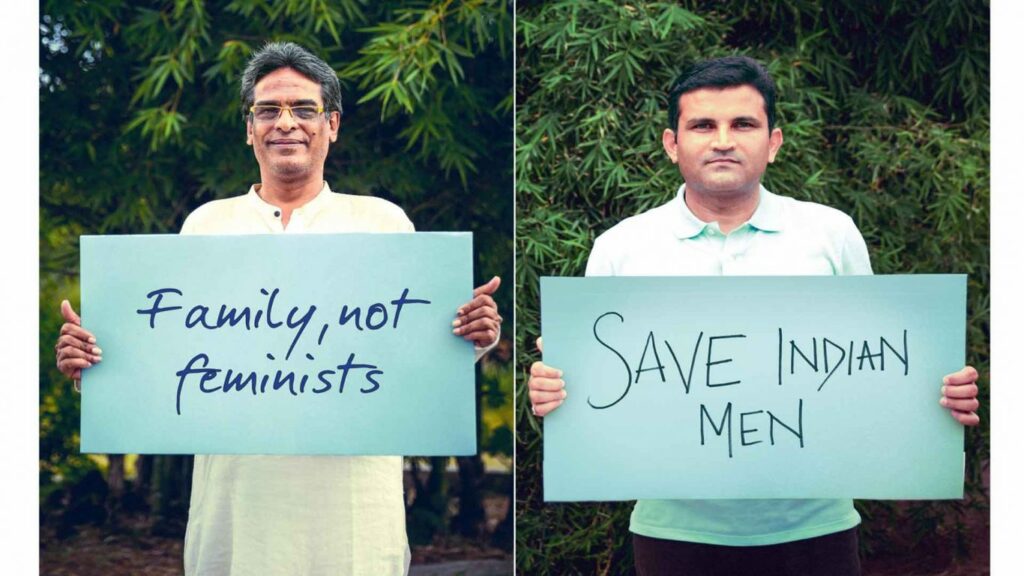
Their claim was these legal relief measures were indeed tools to subjugate and torture men. Through subsequent years this movement grew but on the fringe. From seeking to ban ads to boycotting films (like Talaash) – they have been persistently fighting for their cause. What is the cause? To stop the injustice against men. What is the injustice? To have laws that favour women and discriminate against men.
The laws in question are as follows – anti-dowry law, anti-cruelty-against-wife law and divorce and child-custody laws. Let us not fixate on why men’s rights are inexorably tied to the institution of marriage and look at the reality of their distress. According to a survey led in Haryana, one out of ten men (10%) aged 18 and above has been a victim of domestic violence while in a separate survey, 3 out of 10 women in Haryana (33%) have experienced domestic violence. That is a concerning degree of violence in the domestic setting of a marriage. But in the present scenario, there is no legal comfort for men who have survived domestic abuse.
In a quizzical turn, a report that states 52.4% of men in Haryana experienced gender-based violence also notes that one-tenth of cases of physical assaults were severe and in almost half of the cases, the husband initiated physical and emotional violence. These reports concentrate on Haryana because sadly there have been little to no citable surveys done anywhere else.
In a quizzical turn, a report that states 52.4% of men in Haryana experienced gender-based violence also notes that one-tenth of cases of physical assaults were severe and in almost half of the cases, the husband initiated physical and emotional violence. These reports concentrate on Haryana because sadly there have been little to no citable surveys done anywhere else. The diabolical range of data disparity can also be solved with proper research. But if the movement is not based on academic research, let us jump into the praxis.
As per the report of NCRB (National Crime Record Bureau), 2020, there were 1,11,549 cases registered under section 498A – out of which 5,520 were considered as false by police and 16,151 cases were closed due to mistake of false fact or law or insufficient evidence. While the 89,878 cases reveal the reality of continued violence against women, it will be remiss to overlook the 21,671 cases that were proven false.
Then why are Men’s Rights Activists not taken seriously? Why do feminists bristle at the mention of MRAs? It is because their narrative comes at the expense of the women’s movement. It denies systemic violence, power inequality and patriarchy as the root cause of their own plight. And it continues to twist an anti-patriarchal narrative into an anti-feminist whine. While it is difficult to empathise with a movement whose sole purpose is to decimate another, it is important perhaps to introspect the loopholes left open by the feminist movements that made way for the MRAs.
In a bizarre moment this year, of Hindu deification, Elon Musk was worshipped in a puja by some MRAs in India. Activists from the same movement also held hunger strikes against the Public Interest Petitions (PILs) on marital rape in the Supreme Court. From Andrew Tate to Jordan Peterson to Joe Rogan – the hyper-masculine spokespeople of sexism and misogyny have become the lighthouses of the MRAs.
In a bizarre moment this year, of Hindu deification, Elon Musk was worshipped in a puja by some MRAs in India. Activists from the same movement also held hunger strikes against the Public Interest Petitions (PILs) on marital rape in the Supreme Court. From Andrew Tate to Jordan Peterson to Joe Rogan – the hyper-masculine spokespeople of sexism and misogyny have become the lighthouses of the MRAs. Dedicated social media handles show how every news of an ugly divorce settlement or a false allegation gets emphasised as the norm of society and a brigade of angry men scream about how unloved and used they have been by the society.
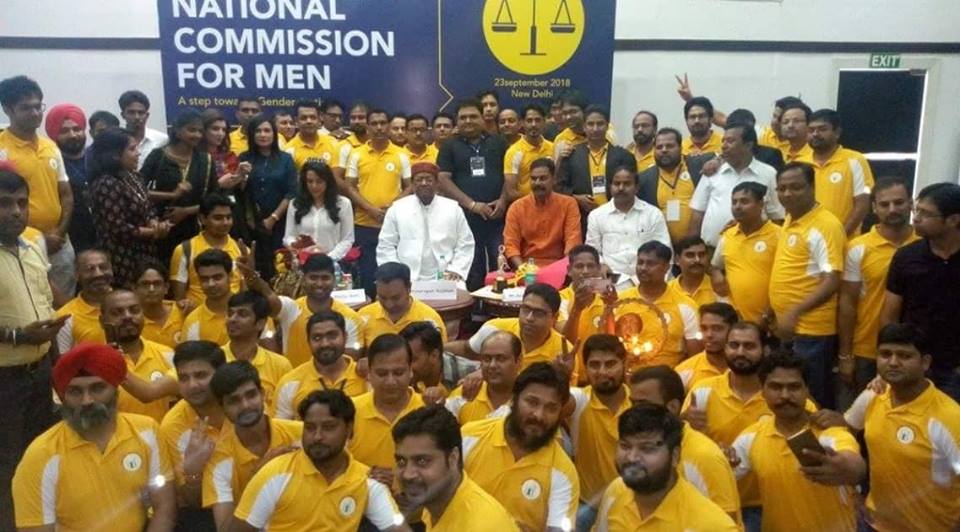
The “red pill” army seems to be the last crusade in the name of patriarchy. While that might seem to be the case, if we read between their hysterical antics we will see their fight indeed is a feminist fight. There is a lacuna in the feminist discourse that we need to address. Without a conversation about feminism’s failure in self-reflexive dialogue, we cannot have a comprehensive look at the ghastly shape the men’s rights movement has taken.
Research led by students at the University of Michigan revealed that the anti-feminist men’s rights movement (MRM) increased after the MeToo movement. There were a few cases of false allegations that only fuelled this fringe movement. Misuse of any law or movement is common. Without being able to honestly address that or have an active dialogue about it – we will isolate the victims of the same system that the movement has been protesting.
MRAs are victims of a patriarchal society. The reality of patriarchy binds us in rigid gender roles and characteristics – which include men becoming the providers and women becoming the caretakers. MRAs argue that they have been used by society as a money-minting machine and love comes rarely their way. Where is the lie? They have been anointed the throne of the “man of the house” and with that comes the unbearable weight of providing.
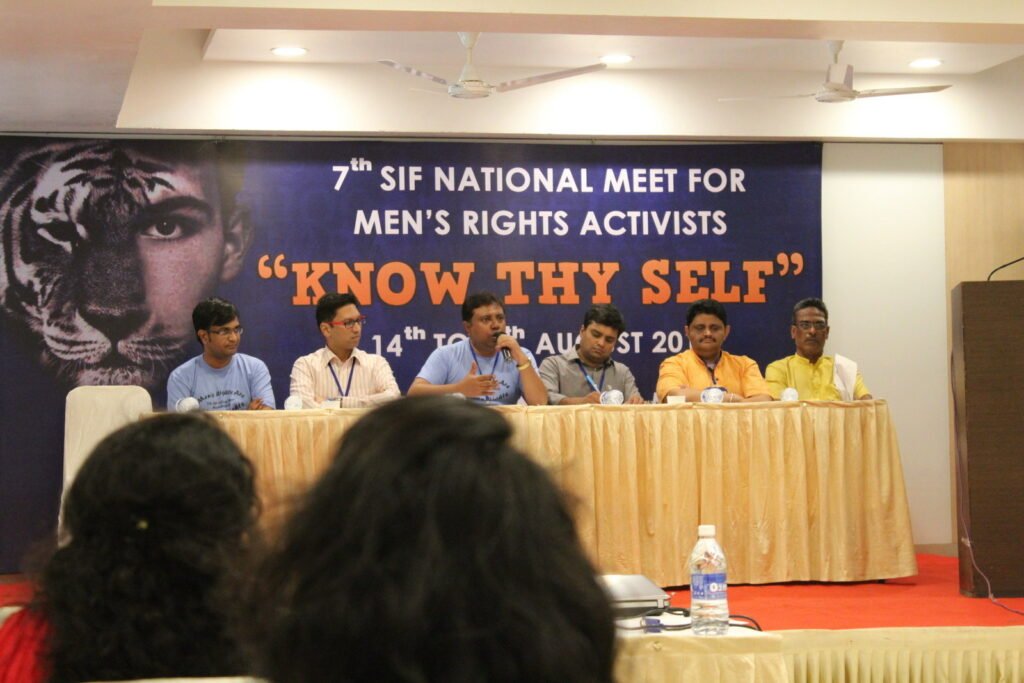
Men’s entitlement to be loved without putting the effort to be emotionally available is an illusion granted by the patriarchal order of society. The origin of India’s MRM is from a victim of a bad marriage – Supreme Court lawyer Ram Prakash Chugh. It is important to take into consideration how beneficiaries of a system would put all their weight into continuing with the order of things. Positive discrimination only makes sense to the victims of the system. One is reminded of the anti-reservation arguments led by upper-caste beneficiaries.
The gendered social roles and their pressure are undeniable. But what MRAs refuse to accept is the structural benefit that men reap from the patriarchal structure. While the man has been burdened with providing, he has also been given social access and safety. While men continue to be victims of domestic violence, there has been no evidence of rape or death due to domestic violence. An entire movement that claims to be for men’s rights, ends up being majorly poised against women’s rights.
The gendered social roles and their pressure are undeniable. But what MRAs refuse to accept is the structural benefit that men reap from the patriarchal structure. While the man has been burdened with providing, he has also been given social access and safety. While men continue to be victims of domestic violence, there has been no evidence of rape or death due to domestic violence. An entire movement that claims to be for men’s rights, ends up being majorly poised against women’s rights. Instead of hearing emotional conversations relating experiences or forming solidarity of surviving abuse – all one can hear at an MRA rave is hate speech against women and the women’s movement.
While the cause at heart is feminist, the language of the MRAs is stamped with antifeminist bile. In a recent low, MRAs rose up to boycott the movie Darlings – a dark comedy about domestic violence against women, because they felt it was really about domestic violence against men. One can only surmise that MRAs would like to continue causing domestic violence without any repercussions. Their voice against PIL for marital rape only reveals that MRAs care little about the violence against men but would prefer continuing with the order of things – a country where marriage legalises rape.
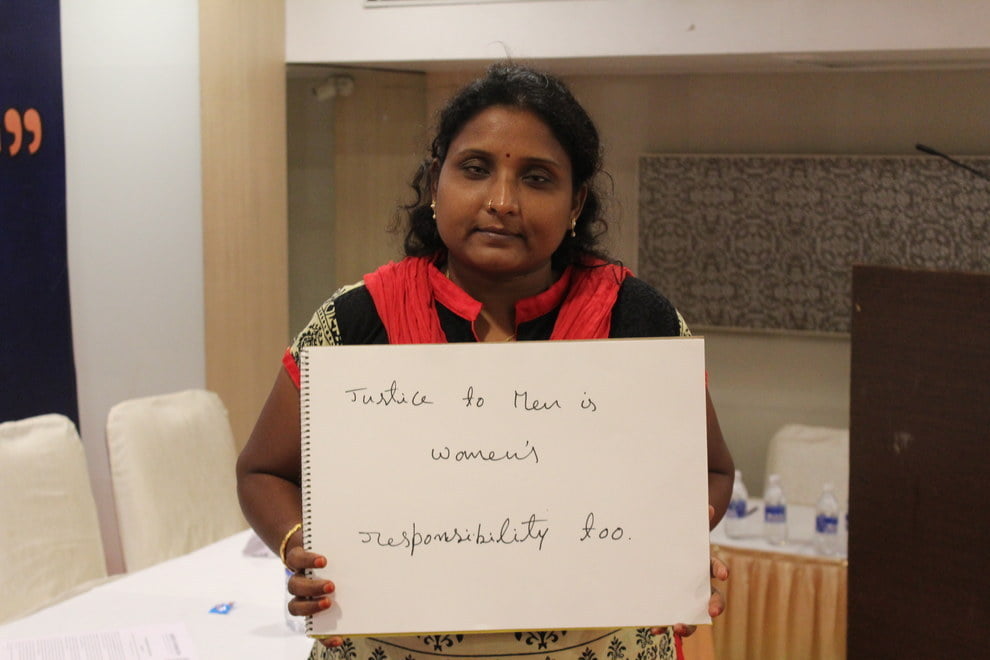
MRAs are mostly self-contained, but social media has helped them promote this discourse to a broader audience. There has been some significant good out of this movement. The #MarriageStrike movement on Twitter, decrying the PIL for marital rape, revealed the rape apologists in society and the general consensus within the movement to stay unmarried does bode well for general society. We hope the cishet men who continue to see the good sense in the anti-feminist men’s rights activism continue on this path.
In the meantime, men who really seek to come out of the clutches of patriarchy and change the social order of gender roles must engage with the feminist discourse. And it is the feminist movement’s responsibility to introspect on how power changes at intersections and corrupts. It is also important to conduct earnest research to help paint the larger picture – because without it we only have the candyfloss tales of social media and WhatsApp university.
About the author(s)
She/they is an editor and illustrator from the suburbs of Bengal. A student of literature and cinema, Sohini primarily looks at the world through the political lens of gender. They uprooted herself from their hometown to work for a livelihood, but has always returned to her roots for their most honest and intimate expressions. She finds it difficult to locate themself in the heteronormative matrix and self-admittedly continues to hang in limbo
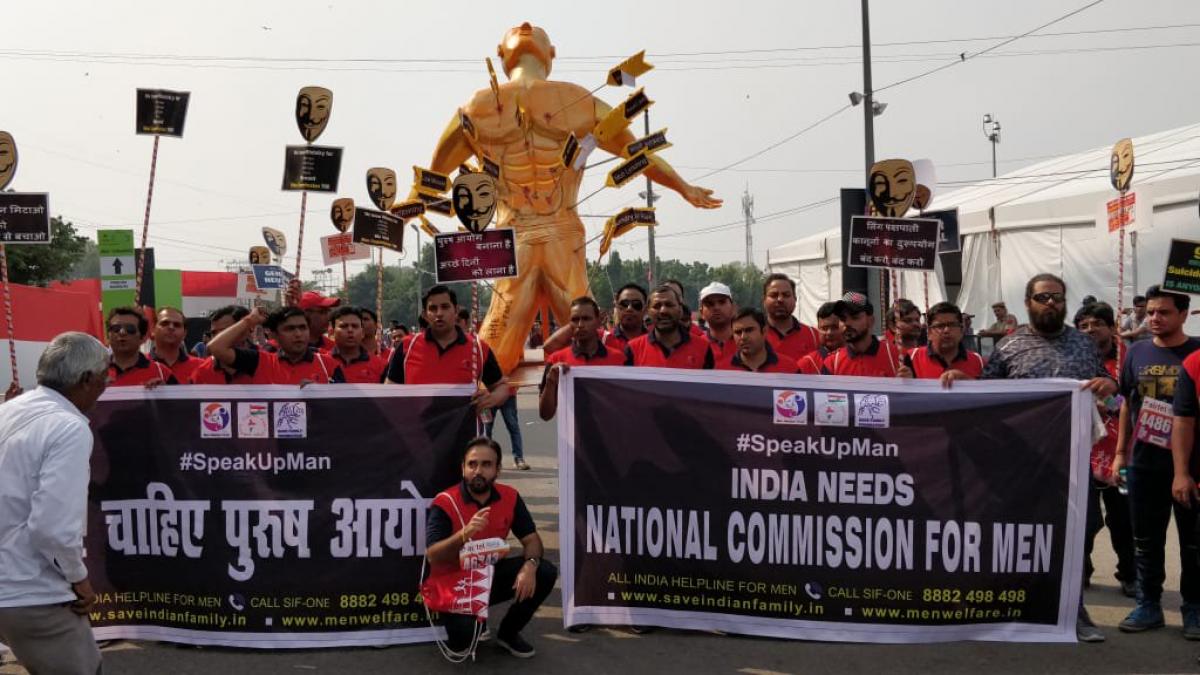


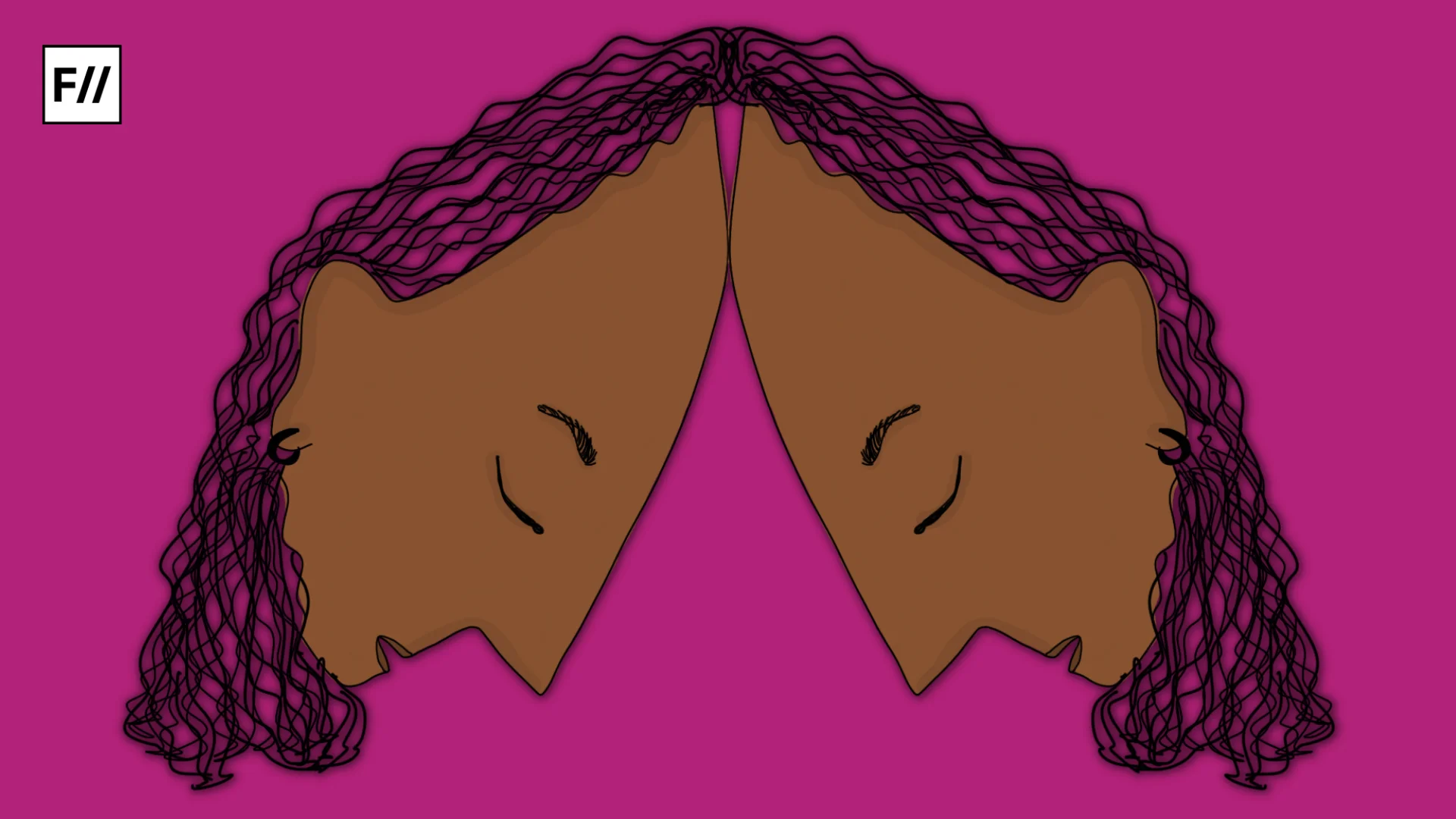

Crimes against women are obviously wrong but they are covered by mainstream media, however, crimes against men are brushed under the carpet as though men are not human beings.
Voice For Men India
https://voiceformenindia.com/
There must be a reason why men are avoiding marriage today, and women asking, “where have all the good men gone?” Good men don’t want to end up divorced and have to give half of their life savings, property, alimony, child support, house, car, and never get to see their children again, not to mention the threats of a false case of dowry (498A), intimidation, blackmail, extortion, and actual false cases where innocent men and their families rot in jail, end up jobless and depressed facing social boycott.
You mentioned, “While men continue to be victims of domestic violence, there has been no evidence of rape or death due to domestic violence.”
The number of suicides of married men are much higher than those of married women. Thousands of men commit suicide every year who face harrassment at the hands of their wives and in-laws. Remember, abuse is not always physical.
https://www.ndtv.com/india-news/suicide-by-married-men-plea-in-supreme-court-seeks-national-commission-for-men-3862692/amp/1
You mentioned, “Their voice against PIL for marital rape only reveals that MRAs care little about the violence against men but would prefer continuing with the order of things – a country where marriage legalises rape.”
In a country where false cases of rape are prevalent and have already destroyed the lives of countless innocent men, criminalising marital rape opens the door for more fabricated allegations. How will it be proved anyway? Should every husband install a camera in his bedroom for his safety?
Crimes against women are covered by mainstream media and not the ones inflicted by women on men. This is mainly because of the gap between men and women, and again this has been created by patriarchy. Patriarchy emphasises that men are leaders and women are supposed to be oppressed. It emphasises that women are weak and men are stronger. This is the main reason why mainstream media mainly cover crimes against women. It is not because they believe men are not human beings. It is because they believe that its difficult to imagine men in situations where they might go through something that women usually go through; this thought is again based on patriarchal beliefs that say men, the superior can only inflict pain on women, the submissive.
The number of suicides of married men is higher than that of married women again because of patriarchy. Most abused men do not have male friends to confide in, unlike women who share their distress with other women without the fear that the secret might come out. This has a major role to play in affecting the mental health of men. Patriarchy emphasises that men don’t cry and that men, the superior do not suffer pain. Hence, most married men who suffer distress at home do not approach help or share their distress with friends or therapists, which abused married women often do. These act as coping mechanisms in such situations. The only way to help abused married men and help them attain mental stability to avoid suicide is to topple patriarchy and let them know that its ok cry, its ok to confide in your friends about familial problems, its ok to see a therapist etc. By shaming the dowry law or marital rape legislation, married men who are really abused won’t benefit. But what we can expect is establishment of mechanisms that identify which cases are false and which ones are true through thorough investigation. Just because some women have waged false allegations on some men doesn’t mean that the thousands of other women who actually face these situations are false too.
Hence, I would like to conclude that the problems of both women and men are linked to patriarchy which does a very great job of assigning gender roles, often men as the oppressor and women as the oppressed. The only way to address the issues you have mentioned is to topple the great wall of patriarchy that divides men and women. Hatred against women is not the solution of men’s problems. What Men’s Rights Activists should really do is provide help to abused married men, be an ear they can tell their secrets, provide them with coping mechanisms and also provide them methods to escape such situations. But what they end up doing is talk hate about women, criticising the laws to protect women and waging war against feminism. None of which is helping the men who actually need help, who are not as portrayed by patriarchy- the oppressor but the oppressed. They fail to include troubled men but end up including women haters, fathers of patriarchy.
It is time Men’s Rights Activists and Feminists stand together to topple the great wall of patriarchy.